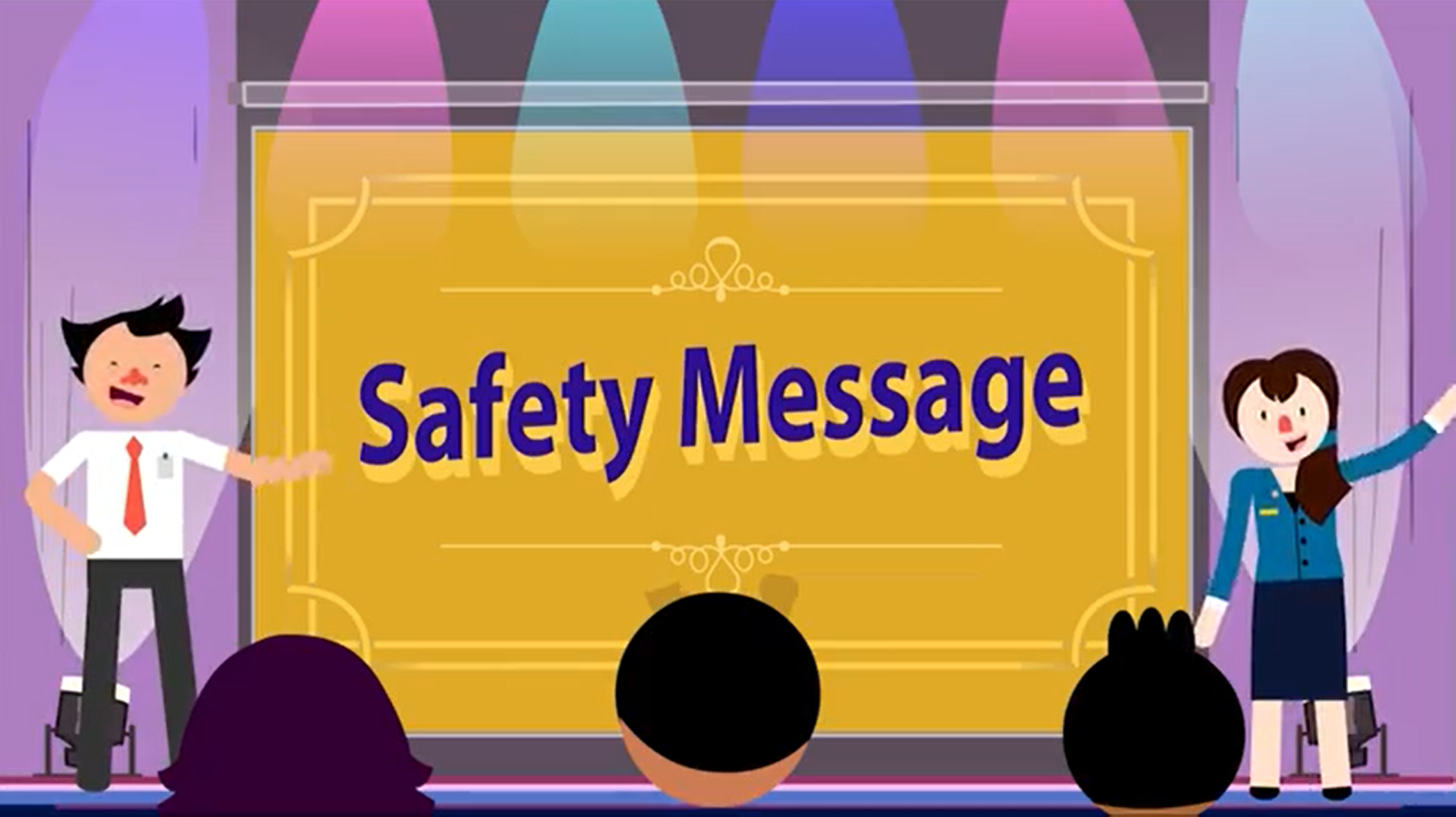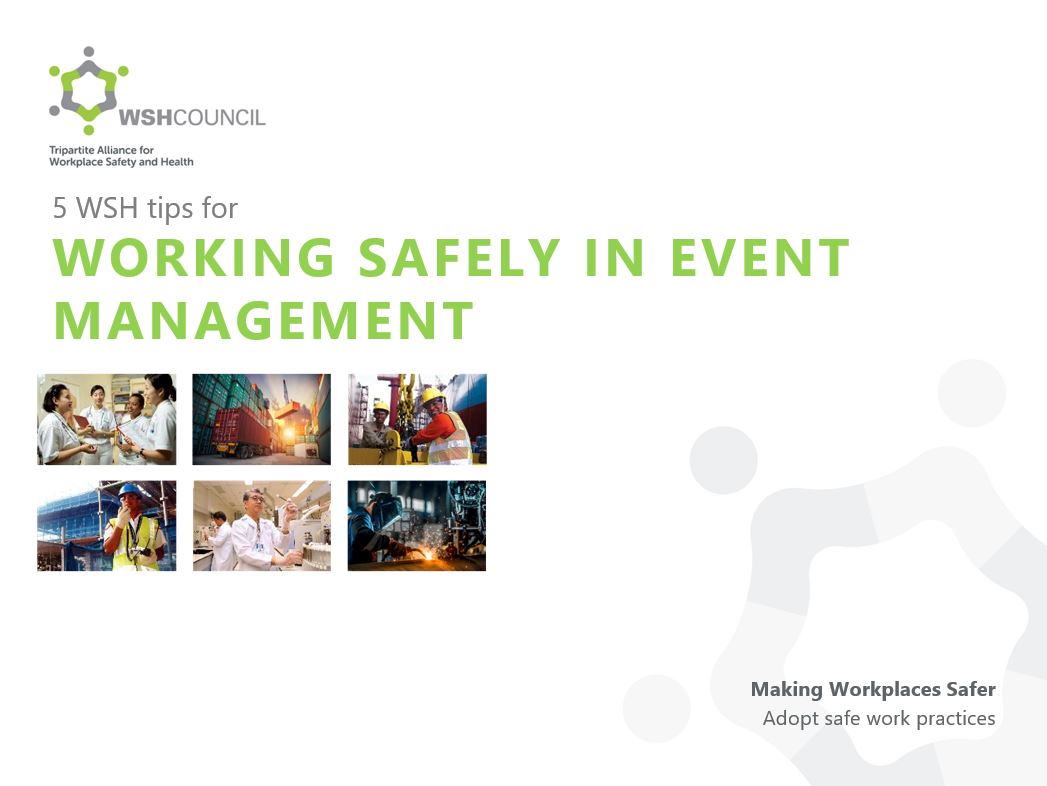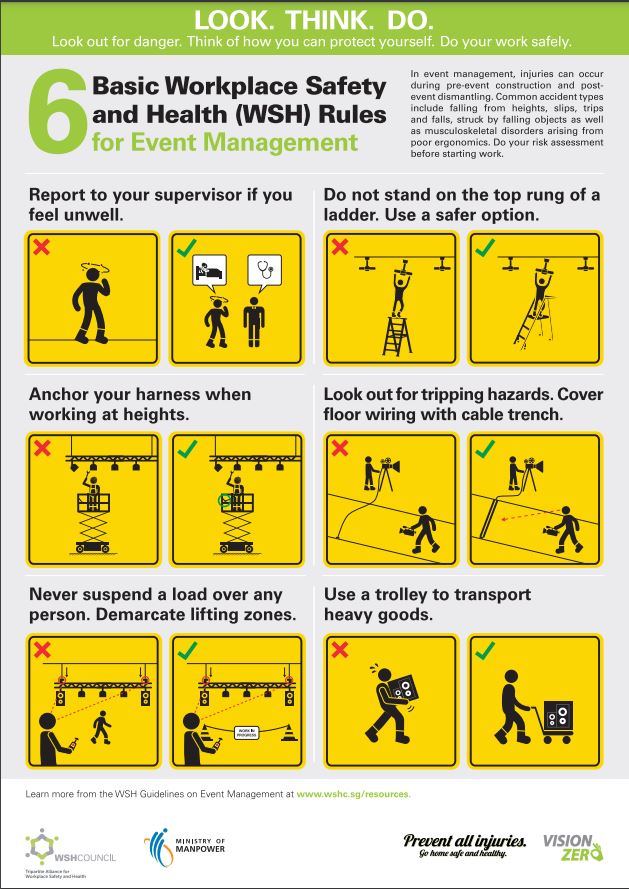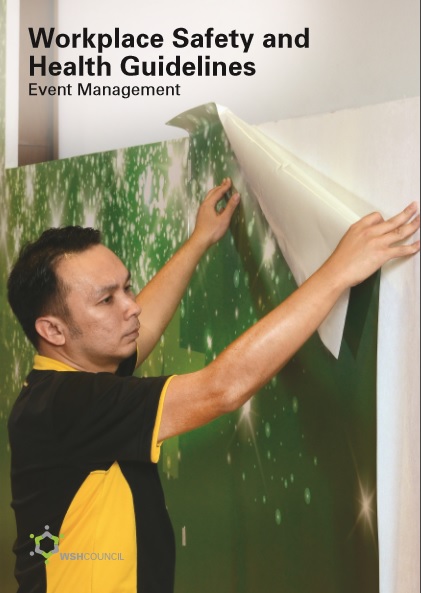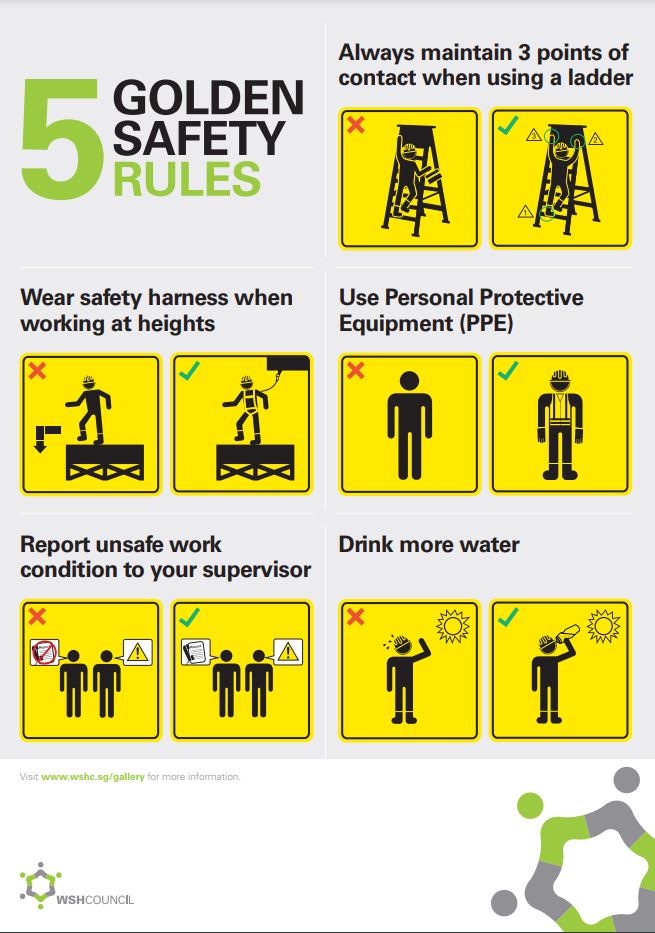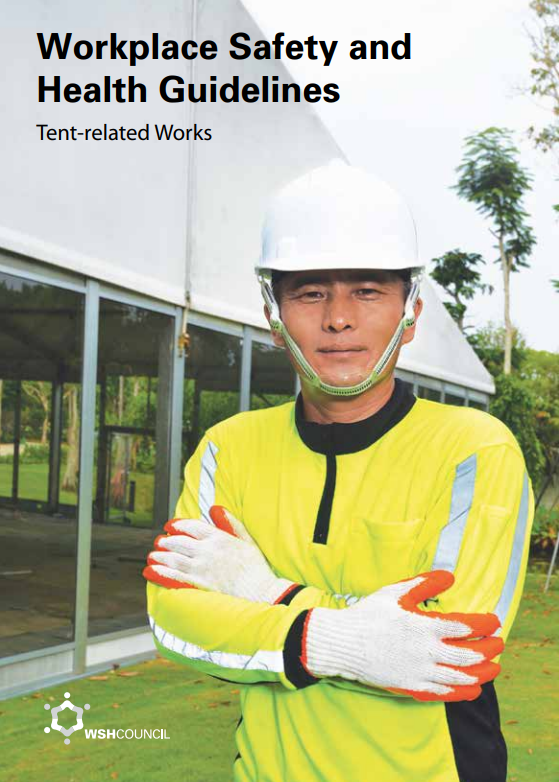Tents
Learn how you can protect yourself from tent-related risks during the handling, erecting and dismantling of tents.
Tent Safety
Tents are familiar sights in Singapore. They come in various shapes and sizes, and are often used during outdoor events such as road shows and carnivals.
The handling, erecting and dismantling of tents can expose workers (as well as the public) to potential hazards such as being struck by falling objects. It is therefore important to manage all tent-related risks with utmost prudence.
Risk Control Measures
Public areas
When erecting tents in public areas, ensure that:
- Warning signs are put up clearly;
- Work zones are barricaded to prevent unauthorised entry; and
- PPE are provided and used properly.
Work at Heights (WAH)
- Avoid working on top of tents (e.g. installing purlins, laying canopy).
- Work from the ground as much as possible (e.g. using prongs to raise purlins).
- Use height-access equipment such as Mobile Elevated Working Platform (MEWP) where appropriate.
- Consider using engineered tents, which eliminate the need to work on tent structures.
Note: Most WAH risks arise when traditional tents are used.
Refer to Work at Heights for more information.
Lorry crane operation
- Check that all lifting gears are certified and in good working condition.
- Ensure outriggers are fully extended and set on firm and level ground.
- Work within the safe working load.
- Stop operation in bad weather conditions.
For more information, refer to Lifting.
Handling electrical equipment
- Barricade mobile generators with sufficient warning signs.
- Engage a Licensed Electrical Worker (LEW) to test and certify the generator and associated earthing system.
- Ensure all electrical components (e.g. fans and lightings) are in good working condition.
- Use only industrial plugs for outdoor work.
- Ensure electricity is tapped safely from a Socket-Outlet Assembly (SOA) or Distribution Board (DB).
- Provide appropriate insulation protection for workers.
Tent Service Buyers’ Responsibilities
As a tent service buyer, you must ensure that the appointed tent contractor has:
- Obtained the necessary licences, permits and any other necessary document before performing tent-related works;
- Performed a thorough risk assessment to identify all the hazards and evaluate the risks; and
- Provided workers with the necessary training and instructions to perform the work safely and properly.
Tent Contractors’ Responsibilities
As a tent contractor, you should ensure that:
- All foreseeable hazards, risks and control measures have been communicated to workers;
- Safe work procedures are established and followed;
- Adequate work supervision has been provided; and
- Appropriate PPE are issued and used properly by workers.

